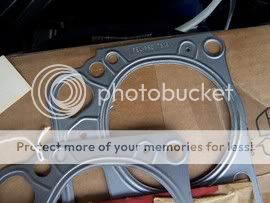Well in a dumb move I managed to crack the intake manifold on my 2v-direct mount large log head for my '66 200 block... so while that's off at the shop to be repaired I figured I might as well mill the head a bit to get higher compression and see if I can get a little more power out of it. Is 9.5:1 still considered the high end for a reliable street car? I'm fine with using 91 gas.
The bottom end is a fairly stock rebuild, .030 over. If I did the calculations correct than with a Victor gasket (.044) I'd have to go to 47cc's to get there, and that seems like a lot to me. 50cc's would be 9.1:1, but not really high performance.
For the formula I used the stock numbers from the tech page and a 3.71 bore size. I wasn't sure what to use for piston dish size, because it says 6.5 or 13.. I picked 6.5. I believe the pistons I have are Enginetech, and it was whatever was considered OEM replacement by the builder.
Any advice?
-Nick
The bottom end is a fairly stock rebuild, .030 over. If I did the calculations correct than with a Victor gasket (.044) I'd have to go to 47cc's to get there, and that seems like a lot to me. 50cc's would be 9.1:1, but not really high performance.
For the formula I used the stock numbers from the tech page and a 3.71 bore size. I wasn't sure what to use for piston dish size, because it says 6.5 or 13.. I picked 6.5. I believe the pistons I have are Enginetech, and it was whatever was considered OEM replacement by the builder.
Any advice?
-Nick




